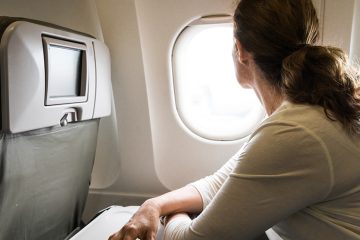How to Rack Up Frequent Flyer Miles and Use Them Wisely
Make the Most of Your Miles
If you’re new to using frequent flyer mileage programs, it can seem overwhelming at first. Many people end up randomly collecting them for the sake of watching them build up, but that’s definitely not the best strategy.
If you use your miles correctly, you can save a ton of money on travel. However, they aren’t always easy to use and can seem more confusing than their worth (though that’s certainly not the case).
From the wide range of programs to the various methods for accumulating miles, to the ongoing management and redemption, there’s a lot to know when it comes to getting the most out of your frequent flyer miles. However, it’s worth understanding because before you know it, you could be reaping some fairly big rewards.
The Basics
Frequent flyer miles, also referred to as airline miles or travel points, are part of loyalty programs offered by airlines and credit cards. Typically, you’ll accumulate a set number of miles based on how much and how far you fly, and/or how much you spend on your credit card. The miles can then be used to buy tickets.
Of course, it’s not exactly that simple. The “miles” don’t equal the actual number of miles you can fly for free, it equates to the number of miles you’ve flown.
Say, for example, you get 2,418 miles for flying from Seattle to New York City. That doesn’t mean you’ll get a free flight of that same length. Depending on the airline program, you’ll need anywhere from 10,000 to 25,000 miles for a free round-trip domestic flight, which means it would take more than four of those SEA-NYC flights to have enough miles for a free flight.
Choose Your Program Wisely
Miles from each airline are redeemed differently, so it’s important to understand your preferred airline’s system. If it doesn’t hold up to some of the others, you may want to consider a change in the airlines you most frequently use.
In general, it’s best to focus on one and accumulate as many miles as you can with that airline, rather than spreading them all out, which can take years to reach a reward unless you’re a very frequent airline traveler. Of course, depending on where you plan to travel and the options available to you, you may need to have a second or even a third option.
Keep in mind that most major airlines have partnerships, which allow you to accumulate the miles with one airline, but use them for flights on a different airline it has a partnership with.
There are much faster ways to get to your destination than by train. That's why train travel USA is all about the journey!
Accumulating Miles
Here’s the best part — even if you don’t fly all that often, there are many other ways to accumulate miles. The number one way is through co-branded airline credit cards, like the Bank of America Alaska Airlines card. Many offer huge sign-up bonuses that are typically good for at least a free flight, and sometimes two of them.
You may have to pay an annual fee (most cards waive the initial fee), but depending on how often you travel, the value of the free flights you’ll get usually outweighs the cost. Most airline credit cards offer additional perks too, such as free checked bags, trip insurance and baggage delay reimbursement.
The best cards usually require a good credit score, so keep that in mind when applying as too many inquiries on your credit report can hurt your credit score and make it even more difficult to score a great one.
The best strategy here is to pay everything you can with your credit card, but pay it off at the end of the month so you don’t end up with a huge pile of debt. That can include your groceries, utility bills, cell phone, cable and most of your regular expenses in addition to extras. It’s easy to see just how quickly those miles can add up every month.
There are many other ways to earn miles too. All major airlines have online shopping programs that allow you to earn miles when you shop through their site. For example, if you’re a Delta mileage member, just go to Skymiles Shopping, and then visit a retail website listed in the directory.
Mileage payouts vary, but the average is around four miles for every dollar spent. So, if you spend $50, you’ll get 200 miles credited to your account. Airlines have dining rewards, car rental programs and other options too.
Hotel rewards programs not only offer valuable points and bonuses for staying but regular promotions that earn you miles without needing to book anything. Some hotel points can also be transferred to airline miles.
Maximizing Your Value
A mile is worth an average of around 1.5 cents, according to SmarterTravel, which is based on the average airline program “charging” 25,000 miles for a coach fare, and an average $350 value for that. Use the same 1.5-cent-per-mile baseline to figure out if you should use your miles for that airline ticket.
To do so, divide the price of the ticket by the number of miles that ticket can be purchased for. For example, say you want to book a trip from Seattle to San Francisco on Alaska Airlines and the number of miles for a free round-trip ticket is 20,000, while the price to purchase is $160.
The per-mile value works out to just eight-tenths of a cent, which means you’d be far better off purchasing that ticket.
On the other hand, maybe you want to go to Mexico. You can get a round-trip ticket for 30,000 miles on Delta, or pay $500. That makes the per-mile value 1.6 cents, so in this case, the better deal is with the miles.
Make sense?
Other Ways to Use Miles
Miles aren’t just good for free flights. You can use them for upgrades, shop with them, give them away as a gift, redeem them for vacation packages, donate them to charity and more.
Just remember to use them, as miles can, and often do, expire.







